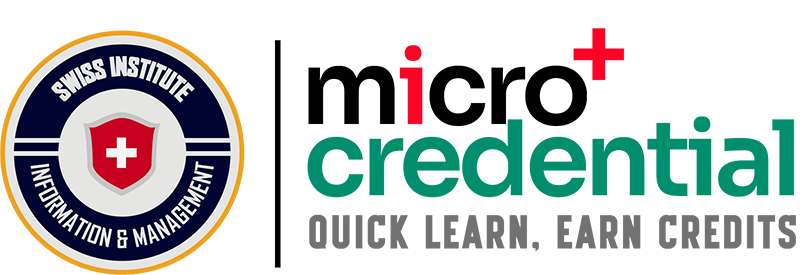Level 3 Award
in Mechanics
Level 3 Award could transfer 20 credits and full tuition fees to Level 3 Diploma programs of SIMI Swiss.

Level 3 Award in Mechanics
The aim of this award is for learners to investigate the motion of particles and objects under the influence of interacting forces. They will also learn about sources of energy and conservation of energy.
Could transfer 20 credits and full tuition fee to the Level 3 Diploma in Engineering of SIMI Swiss.
Learning Outcomes:
1. Understand the motion of objects in mathematical terms.
-
1.1 Explain the relationships between displacement, velocity and acceleration.
-
1.2 Draw distance–time graphs from measurements and extract and interpret lines and slopes of distance–time graphs.
-
1.3 Discuss Newton’s Three Laws of Motion with examples.
2. Understand energy changes in a system.
-
2.1 Explain the ways energy is stored before and after such changes.
-
2.2 Calculate the changes in energy involved when a system is changed by:
-
heating
-
work done by forces
-
work done when a current flow
-
-
2.3 Calculate the amount of energy associated with a moving object, a stretched spring and an object raised above ground level.
3. Understand energy transfer, forces and elasticity
-
3.1 Calculate the energy transfer involved when work is done.
-
3.2 Convert between newton-metres and joules.
-
3.3 Give examples of the forces involved in stretching, bending or compressing an object.
-
3.4 Describe the difference between elastic deformation and inelastic deformation caused by stretching forces.
Topics:
Understand the motion of objects in mathematical terms.
Course Coverage
-
Relationships between displacement, velocity, and acceleration
-
Distance is how far an object moves. Distance does not involve direction. Distance is a scalar quantity.
-
Displacement includes both the distance an object moves, measured in a straight line from the start point to the finish point and the direction of that straight line. Displacement is a vector quantity.
-
Displacement in terms of both the magnitude and direction.
-
The velocity of an object is its speed in a given direction. Velocity is a vector quantity.
-
Vector–scalar distinction as it applies to displacement, distance, velocity and speed.
-
Qualitatively: motion in a circle involves constant speed but changing velocity.
-
The acceleration of an object can be calculated from the gradient of a velocity-time graph.
-
Estimate the magnitude of everyday accelerations.
-
-
Draw distance–time graphs from measurements and extract and interpret lines and slopes of distance–time graphs, translating information between graphical and numerical form.
-
Determine speed from a distance-time graph.
-
Apply Newton’s First Law to explain the motion of objects moving with a uniform velocity and objects where the speed and/or direction changes.
-
Apply Newton’s Second Law to estimate the speed, accelerations and forces involved in large accelerations for everyday road transport.
-
Apply Newton’s Third Law to examples of equilibrium situations.
Understand energy changes in a system.
Course Coverage
-
A system is an object or group of objects. There are changes in the way energy is stored when a system changes.
-
Changes involved in the way energy is stored when a system changes, for common situations. For example:
-
an object projected upwards
-
a moving object hitting an obstacle
-
an object accelerated by a constant force
-
a vehicle slowing down
-
bringing water to a boil in an electric kettle.
-
-
Calculate the changes in energy involved when a system is changed by:
-
heating
-
work done by forces
-
work done when a current flow
-
-
The kinetic energy (K.E.) of a body is the energy a body has as a result of its motion. A body which is not moving will have zero kinetic energy, therefore.
-
K.E. = ½ mv2
-
Conservation of Energy
-
If gravity is the only external force which does work on a body, then the total energy of the body will remain the same, a property known as the conservation of energy.
-
Therefore, providing no work is done: Initial (PE + KE) = final (PE + KE)
-
Power
-
Power is the rate at which work is done (measured in watts (W)), in other words the work done per second.
-
-
It turns out that: Power = Force × Velocity
-
Calculate the amount of energy associated with a moving object, a stretched spring and an object raised above ground level.
-
The kinetic energy of a moving object can be calculated using the equation: kinetic energy =0.5 ×mass × speed 2
Understand energy transfer, forces and elasticity.
Course Coverage
-
The work done by a force on an object can be calculated using the equation: work done = force × distance (moved along the line of action of the force) W =Fs work done, W, in joules, J force, F, in newtons, N distance, s, in metres.
-
One joule of work is done when a force of one newton causes a displacement of one metre.
-
1 joule = 1 newton-metre
-
Students should be able to describe the energy transfer involved when work is done.
-
-
The extension of an elastic object, such as a spring, is directly proportional to the force applied, provided that the limit of proportionality is not exceeded.
-
force =spring constant ×extension F=ke
-
force, F, in newtons, N
-
spring constant, k, in newtons per metre, N/m
-
extension, e, in metres, m
-
-
This relationship also applies to the compression of an elastic object, where ‘e’ would be the compression of the object.
-
A force that stretches (or compresses) a spring does work, and elastic potential energy is stored in the spring. Provided the spring is not inelastically deformed, the work done on the spring and the elastic potential energy stored are equal.
Indicative reading list
-
Hibbeler, R. (2016) Engineering Mechanics: statics and dynamics. 14th ed. Prentice Hall.
-
Meriam, J. & Krasige, L. (2016) Engineering Mechanics: dynamics. 8th ed. John Wile.
Entry requirements
- Applicants must be at least 16 years old.
- Completion of full secondary education is required.
English requirements
If a learner is not from a predominantly English-speaking country, proof of English language proficiency must be provided.
- Common European Framework of Reference (CEFR) level B2 or equivalent
- Or A minimum TOEFL score of 101 or IELTS 5.5; Reading and Writing must be at 5.5 or equivalent
- Or A minimum Pearson Test of English Academic (PTE Academic) score of 51 or equivalent
The SIMI Swiss reserves the highest decision-making power for admission whether to accept or not accept after a specific review of each candidate’s profile to ensure that they can comprehend and gain benefits when participating. For the fake university or diploma mills, University Partners shall not be accepted.
After graduating with Level 3 Award, students receive all certified documents from the SIMI Swiss.
Certified Documents:
- e-Certificate from the Swiss Information and Management Institute (SIMI Swiss).
- Hard copy certificate from the Swiss Information and Management Institute (SIMI Swiss) – Optional.
- Accreditation of Prior Experiential Learning for Qualifications (APEL.Q) certified from SIMI Swiss for credit and tuition fee transfer.
Because the program is accredited and recognized, students can easily use certified in the working environment and have many opportunities for career advancement. In addition, in case if you want to study for a SIMI degree or university partner degree, students can convert all credits and the full paid tuition fee.
The SIMI Swiss’ Level 3 Award means:
The SIMI Swiss Level 3 Award is a qualification at the foundational level and is equivalent to the following:
- Level 3 Certificate of the Regulated Qualification Framework (RQF) in the UK
- Level 6 Certificate of the Scottish Credit and Qualifications Framework (SCQF)
- Level 3 Certificate of the Credit and Qualifications Framework for Wales (CQFW)
- Level 3 Certificate of the European Qualifications Framework (EQF)
- Level 4 Certificate of the Australian Qualifications Framework (AQF)
- Level 3 Certificate of the ASEAN Qualifications Reference Framework (AQRF)
- Level 4 Certificate of the African Continental Qualifications Framework (ACQF)
Students can convert all credits and the full tuition fee when participating in the SIMI Swiss and/or University Partners academic programs if they want to study for an academic degree.
Credits transfer:
Learners can accumulate 20 credits from the Level 3 Award program when participating in the Level 3 Diploma program. Please see the credit transfer policy HERE
Tuition fee transfer:
When participating in the Level 3 Diploma program, students who have graduated 1 Level 3 Award will receive a discount of full tuition fee which you paid. Please see the tuition fee transfer HERE
The SIMI Swiss micro-credential program allows for the transfer of credits and tuition fees into full degree programs from SIMI Swiss and/or its university partners. SIMI Swiss reserves the right to limit admissions once the number of students exceeds the quotas.
Apply Policy:
- To participate in the SIMI Swiss micro-credential program, students need to meet the entry criteria corresponding to each level. Please see the “Entry” tab for more details.
- SIMI Swiss will not accept applicants if their entry qualifications are from diploma mill universities or schools/universities that are not accredited.
- English is not a mandatory entry requirement for Micro Credential programs, but candidates need to ensure that English is used in reading documents, listening to lectures, and doing assignments. Candidates should note that English is a mandatory requirement when switching to an academic program at SIMI Swiss and University Partners.
Apply Process:
- Choose the program that suits your requirements.
- Email your application to support@simiswiss.ch with all the required documents. You can download the application form here.
- Our admission department will contact you and guide you through further processes if the registration documents need to be supplemented.
- SIMI Swiss will issue the Letter of Acceptant (LOA). You wil proceed to the next steps according to the instructions and pay tuition fee.
- SIMI Swiss will issue a student confirmation letter, login account to the e-learning system and related documents.
- You have become an official SIMI Swiss student and enjoy your study journey.
The SIMI Swiss micro-credential program is fully online, allowing you to study anytime, anywhere. You have the option to attend live classes with SIMI Swiss. The final exam will be uploaded to the system and evaluated by the academic panel of SIMI Swiss. Students must submit assignments on time; failure to do so will result in the student being considered to have discontinued the program.
Pricing Plans
Take advantage of one of our non-profit professional certified programs with favorable terms for your personal growing carreers.
- Full online videos
- e-Books
- Self-study contents
- Online tutor videos
- Assignment guide
- e-Certificate
- Hard copy certificate
- Accreditation & Recognition certified from University Partners
- Deliver hard copy certificate and all certified documents to your home
- Transfer full credits & tuition fees to equivalent academic programs
- Get more support tuition fees and scholarships when becoming SIMI' international students
- (*) In the event that you receive a scholarship or discount, the fee you should transfer is the amount you actually paid.
SWISS MICRO CREDENTIAL
Contact us
If you interested this micro credential course, please feel free to contact with us! Please note that this program is a not for profit and learning with full online model.
